Mihai Surdeanu
Can LLMs Judge Debates? Evaluating Non-Linear Reasoning via Argumentation Theory Semantics
Sep 19, 2025Abstract:Large Language Models (LLMs) excel at linear reasoning tasks but remain underexplored on non-linear structures such as those found in natural debates, which are best expressed as argument graphs. We evaluate whether LLMs can approximate structured reasoning from Computational Argumentation Theory (CAT). Specifically, we use Quantitative Argumentation Debate (QuAD) semantics, which assigns acceptability scores to arguments based on their attack and support relations. Given only dialogue-formatted debates from two NoDE datasets, models are prompted to rank arguments without access to the underlying graph. We test several LLMs under advanced instruction strategies, including Chain-of-Thought and In-Context Learning. While models show moderate alignment with QuAD rankings, performance degrades with longer inputs or disrupted discourse flow. Advanced prompting helps mitigate these effects by reducing biases related to argument length and position. Our findings highlight both the promise and limitations of LLMs in modeling formal argumentation semantics and motivate future work on graph-aware reasoning.
How Is LLM Reasoning Distracted by Irrelevant Context? An Analysis Using a Controlled Benchmark
May 24, 2025Abstract:We introduce Grade School Math with Distracting Context (GSM-DC), a synthetic benchmark to evaluate Large Language Models' (LLMs) reasoning robustness against systematically controlled irrelevant context (IC). GSM-DC constructs symbolic reasoning graphs with precise distractor injections, enabling rigorous, reproducible evaluation. Our experiments demonstrate that LLMs are significantly sensitive to IC, affecting both reasoning path selection and arithmetic accuracy. Additionally, training models with strong distractors improves performance in both in-distribution and out-of-distribution scenarios. We further propose a stepwise tree search guided by a process reward model, which notably enhances robustness in out-of-distribution conditions.
Fane at SemEval-2025 Task 10: Zero-Shot Entity Framing with Large Language Models
Apr 29, 2025Abstract:Understanding how news narratives frame entities is crucial for studying media's impact on societal perceptions of events. In this paper, we evaluate the zero-shot capabilities of large language models (LLMs) in classifying framing roles. Through systematic experimentation, we assess the effects of input context, prompting strategies, and task decomposition. Our findings show that a hierarchical approach of first identifying broad roles and then fine-grained roles, outperforms single-step classification. We also demonstrate that optimal input contexts and prompts vary across task levels, highlighting the need for subtask-specific strategies. We achieve a Main Role Accuracy of 89.4% and an Exact Match Ratio of 34.5%, demonstrating the effectiveness of our approach. Our findings emphasize the importance of tailored prompt design and input context optimization for improving LLM performance in entity framing.
Say Less, Mean More: Leveraging Pragmatics in Retrieval-Augmented Generation
Feb 25, 2025Abstract:We propose a simple, unsupervised method that injects pragmatic principles in retrieval-augmented generation (RAG) frameworks such as Dense Passage Retrieval~\cite{karpukhin2020densepassageretrievalopendomain} to enhance the utility of retrieved contexts. Our approach first identifies which sentences in a pool of documents retrieved by RAG are most relevant to the question at hand, cover all the topics addressed in the input question and no more, and then highlights these sentences within their context, before they are provided to the LLM, without truncating or altering the context in any other way. We show that this simple idea brings consistent improvements in experiments on three question answering tasks (ARC-Challenge, PubHealth and PopQA) using five different LLMs. It notably enhances relative accuracy by up to 19.7\% on PubHealth and 10\% on ARC-Challenge compared to a conventional RAG system.
CopySpec: Accelerating LLMs with Speculative Copy-and-Paste Without Compromising Quality
Feb 13, 2025Abstract:We introduce CopySpec, an innovative technique designed to tackle the inefficiencies LLMs face when generating responses that closely resemble previous outputs. CopySpec identifies repeated sequences in the model's chat history and speculates that the same tokens will follow, enabling seamless copying without compromising output quality or requiring additional GPU memory. To evaluate the effectiveness of our approach, we conducted experiments using five LLMs and five datasets: MT-Bench, CNN/DM, GSM-8K, HumanEval, and our newly created dataset, MT-Redundant. MT-Redundant, introduced in this paper, transforms the second turn of MT-Bench into a request for variations of the first turn's answer, simulating real-world scenarios where users request modifications to prior responses. Our results demonstrate significant speed-ups: up to 2.35x on CNN/DM, 3.08x on the second turn of select MT-Redundant categories, and 2.66x on the third turn of GSM-8K's self-correction tasks. Moreover, we show that CopySpec integrates seamlessly with speculative decoding, yielding an average 49% additional speed-up over speculative decoding for the second turn of MT-Redundant across all eight categories. While LLMs, even with speculative decoding, suffer from slower inference as context sizes grow, CopySpec leverages the expanded context to accelerate inference, making it faster as the context size increases. Our code and dataset are publicly available at https://github.com/RazvanDu/CopySpec.
MorphNLI: A Stepwise Approach to Natural Language Inference Using Text Morphing
Feb 13, 2025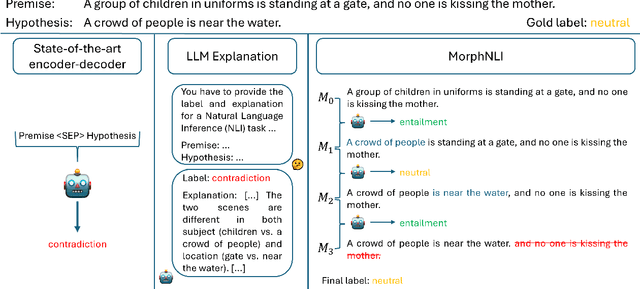
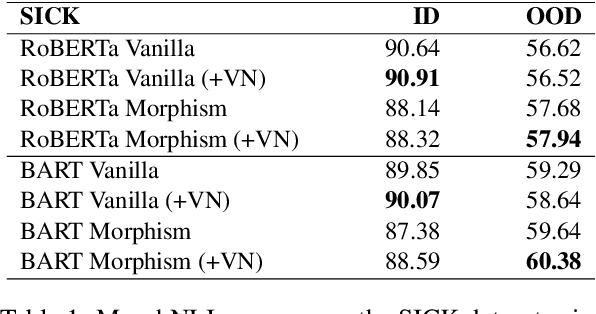
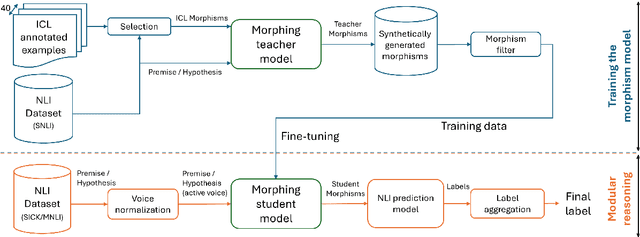
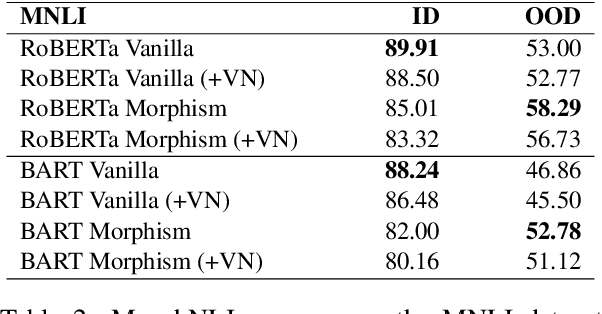
Abstract:We introduce MorphNLI, a modular step-by-step approach to natural language inference (NLI). When classifying the premise-hypothesis pairs into {entailment, contradiction, neutral}, we use a language model to generate the necessary edits to incrementally transform (i.e., morph) the premise into the hypothesis. Then, using an off-the-shelf NLI model we track how the entailment progresses with these atomic changes, aggregating these intermediate labels into a final output. We demonstrate the advantages of our proposed method particularly in realistic cross-domain settings, where our method always outperforms strong baselines with improvements up to 12.6% (relative). Further, our proposed approach is explainable as the atomic edits can be used to understand the overall NLI label.
Finding a Wolf in Sheep's Clothing: Combating Adversarial Text-To-Image Prompts with Text Summarization
Dec 15, 2024



Abstract:Text-to-image models are vulnerable to the stepwise "Divide-and-Conquer Attack" (DACA) that utilize a large language model to obfuscate inappropriate content in prompts by wrapping sensitive text in a benign narrative. To mitigate stepwise DACA attacks, we propose a two-layer method involving text summarization followed by binary classification. We assembled the Adversarial Text-to-Image Prompt (ATTIP) dataset ($N=940$), which contained DACA-obfuscated and non-obfuscated prompts. From the ATTIP dataset, we created two summarized versions: one generated by a small encoder model and the other by a large language model. Then, we used an encoder classifier and a GPT-4o classifier to perform content moderation on the summarized and unsummarized prompts. When compared with a classifier that operated over the unsummarized data, our method improved F1 score performance by 31%. Further, the highest recorded F1 score achieved (98%) was produced by the encoder classifier on a summarized ATTIP variant. This study indicates that pre-classification text summarization can inoculate content detection models against stepwise DACA obfuscations.
Change Is the Only Constant: Dynamic LLM Slicing based on Layer Redundancy
Nov 05, 2024
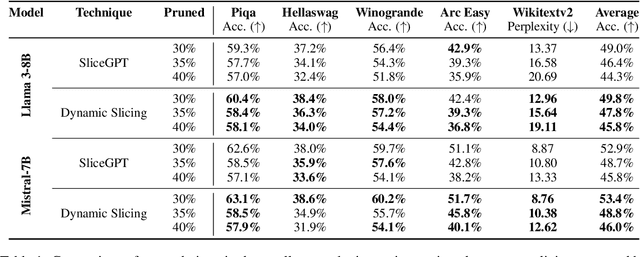

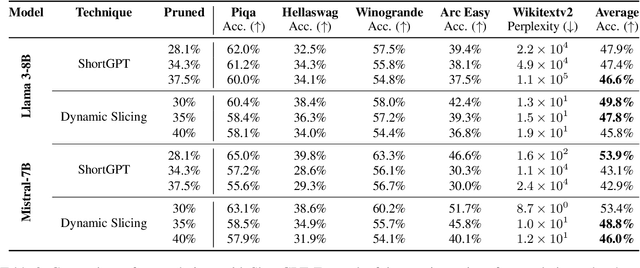
Abstract:This paper introduces a novel model compression approach through dynamic layer-specific pruning in Large Language Models (LLMs), enhancing the traditional methodology established by SliceGPT. By transitioning from constant to dynamic slicing, our method leverages the newly proposed Layer Redundancy (LR) score, which assesses how much change each layer changes its input by measuring the cosine similarity of the input to the output of the layer. We use this score to prune parts of individual layers based on redundancy in such a way that the average pruned percentage for all layers is a fixed value. We conducted extensive experiments using models like Llama3-8B and Mistral-7B on multiple datasets, evaluating different slicing bases and percentages to determine optimal configurations that balance efficiency and performance. Our findings show that our dynamic slicing approach not only maintains but, in many cases, enhances model performance compared to the baseline established by constant slicing methods. For instance, in several settings, we see performance improvements of up to 5% over the SliceGPT baseline. Additionally, a perplexity decrease by as much as 7% was observed across multiple benchmarks, validating the effectiveness of our method. The code, model weights, and datasets are open-sourced at https://github.com/RazvanDu/DynamicSlicing.
When and Where Did it Happen? An Encoder-Decoder Model to Identify Scenario Context
Oct 10, 2024



Abstract:We introduce a neural architecture finetuned for the task of scenario context generation: The relevant location and time of an event or entity mentioned in text. Contextualizing information extraction helps to scope the validity of automated finings when aggregating them as knowledge graphs. Our approach uses a high-quality curated dataset of time and location annotations in a corpus of epidemiology papers to train an encoder-decoder architecture. We also explored the use of data augmentation techniques during training. Our findings suggest that a relatively small fine-tuned encoder-decoder model performs better than out-of-the-box LLMs and semantic role labeling parsers to accurate predict the relevant scenario information of a particular entity or event.
Memorization In In-Context Learning
Aug 21, 2024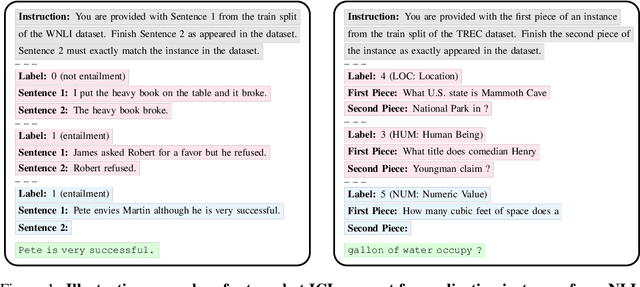
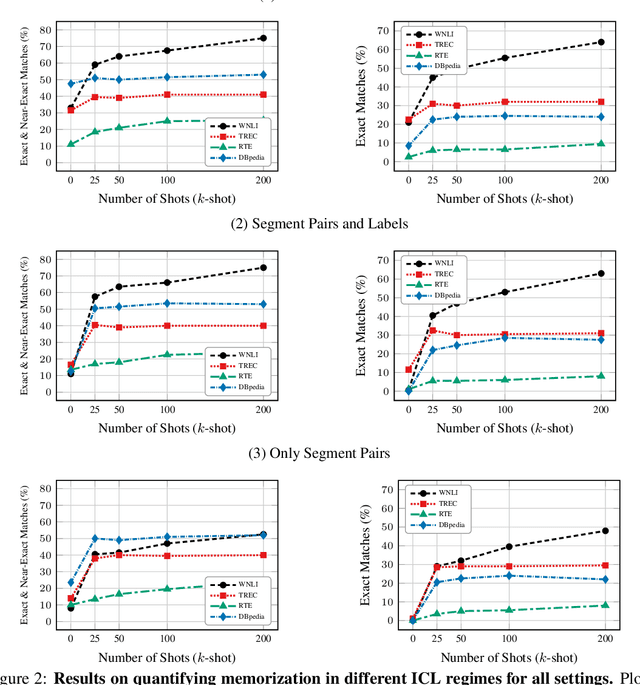

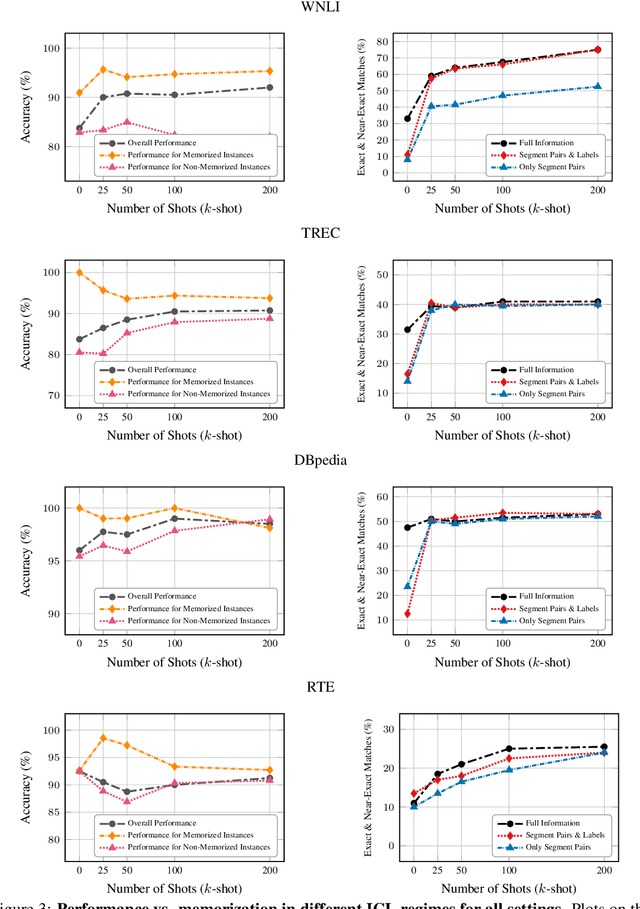
Abstract:In-context learning (ICL) has proven to be an effective strategy for improving the performance of large language models (LLMs) with no additional training. However, the exact mechanism behind these performance improvements remains unclear. This study is the first to show how ICL surfaces memorized training data and to explore the correlation between this memorization and performance across various ICL regimes: zero-shot, few-shot, and many-shot. Our most notable findings include: (1) ICL significantly surfaces memorization compared to zero-shot learning in most cases; (2) demonstrations, without their labels, are the most effective element in surfacing memorization; (3) ICL improves performance when the surfaced memorization in few-shot regimes reaches a high level (about 40%); and (4) there is a very strong correlation between performance and memorization in ICL when it outperforms zero-shot learning. Overall, our study uncovers a hidden phenomenon -- memorization -- at the core of ICL, raising an important question: to what extent do LLMs truly generalize from demonstrations in ICL, and how much of their success is due to memorization?
 Add to Chrome
Add to Chrome Add to Firefox
Add to Firefox Add to Edge
Add to Edge